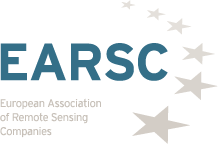2017 September
-
Copernicus 4 Energy workshop
- September 8, 2017
- Posted by: EARSC
- Category: EARSC News
No CommentsThe “Copernicus 4 Energy” workshop will take place at the Breydel Auditorium (DG GROW) on 12 October 2017.
-
Supporting innovation in UK industry – priorities for investment, the commercialisation of research and UK competitiveness post-Brexit.
- September 7, 2017
- Posted by: EARSC
- Category: Archive
-
One UN collaboration on access to and awareness raising of Earth observation for Sustainable Development Goals
- September 5, 2017
- Posted by: EARSC
- Category: EARSC News
VIENNA/GENEVA, 4 September (UN Information Service) – The United Nations Office for Outer Space Affairs (UNOOSA) and the United Nations Institute for Training and Research (UNITAR) have agreed to collaborate to further their common goals, particularly the use of space-based technology for the achievement of the 2030 Agenda for Sustainable Development and its 17 Sustainable Development Goals.
-
ESCAPE 2nd Dissemination and Training workshop
- September 5, 2017
- Posted by: EARSC
- Category: Archive
-
European Space Imaging delivers 100% success rate in European Commission’s 2017 CwRS Program
- September 5, 2017
- Posted by: EARSC
- Categories: EARSC News, Uncategorised
Speedy delivery and quality imagery mark European Space Imaging’s acquistions for EU’s CAP.
-
United Nations/Austria Symposium on Access to Space: Holistic Capacity-Building for the 21st Century
- September 3, 2017
- Posted by: EARSC
- Category: Archive
-
Strengthening Disaster Risk Reduction across the Americas: A Regional Summit on the Contribution of Earth Observations
- September 3, 2017
- Posted by: EARSC
- Category: Archive
-
Copernicus assists in monitoring risks and planning for response to marine pollution
- September 1, 2017
- Posted by: EARSC
- Category: EARSC News
© Copernicus. In March 2017, following an armed attack on the oil port of Es Sider in Libya, the Regional Marine Pollution Emergency Response Centre for Mediterranean Sea (REMPEC) activated the Mediterranean Operational Network for the Global Ocean Observing System (MONGOOS) services to simulate the worst-case scenario in the case of a potential oil spill incident. This simulation, based on data provided by the Copernicus Marine Environment Monitoring Service, in combination with other sources, including local information from REMPEC Focal Points in Libya, providing forecasts on currents and wind, showed that in only 24 hours about 44% of the oil would reach the coast. This information has proven vital for public authorities to prepare for any risk from accidental marine pollution.
